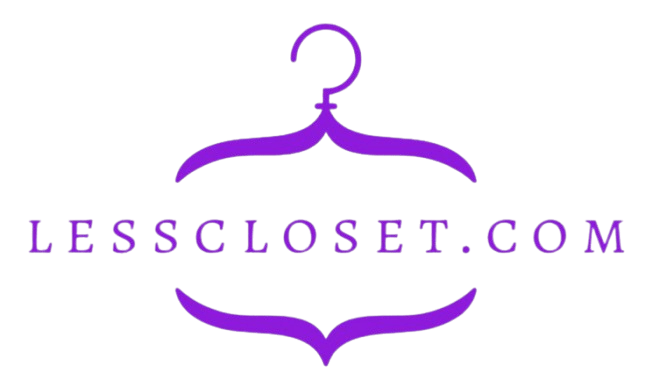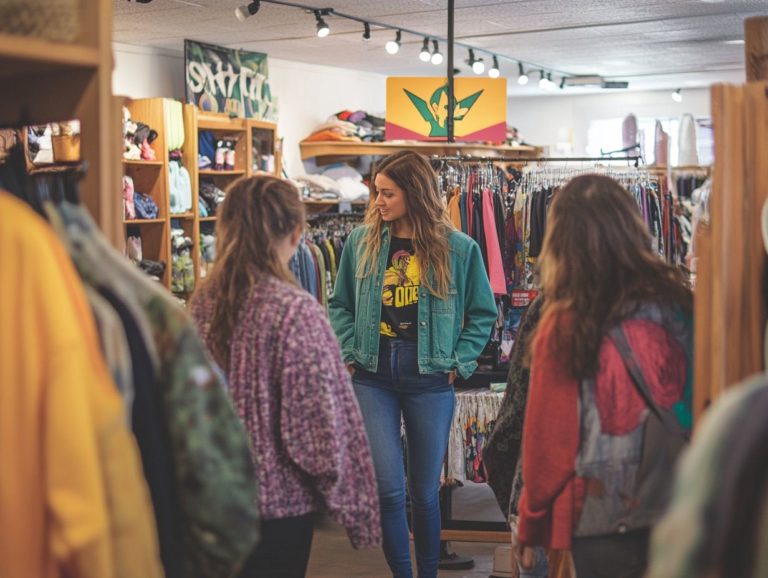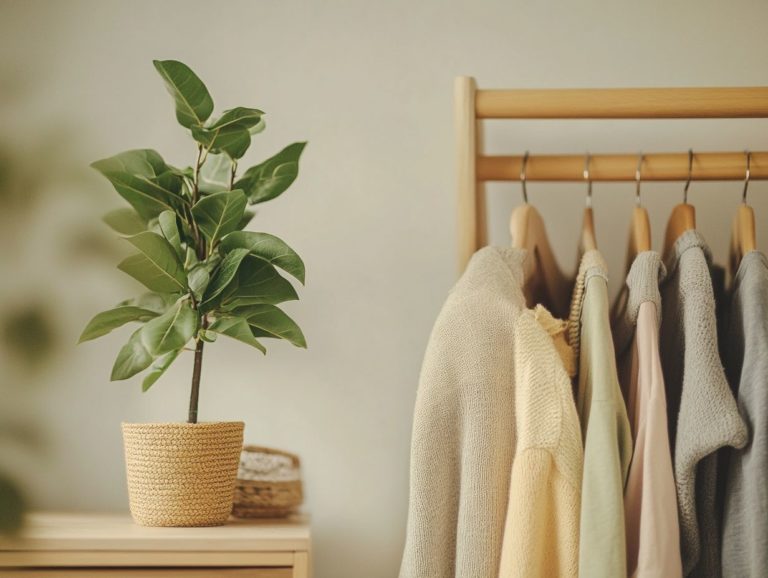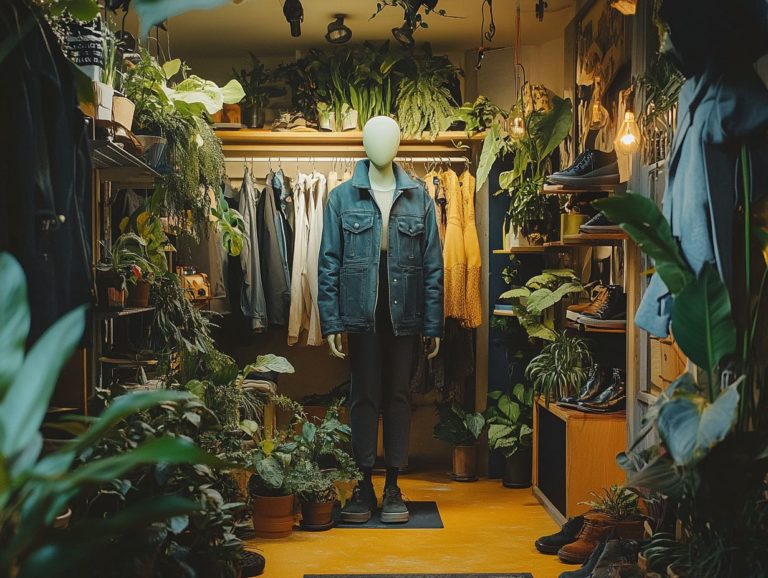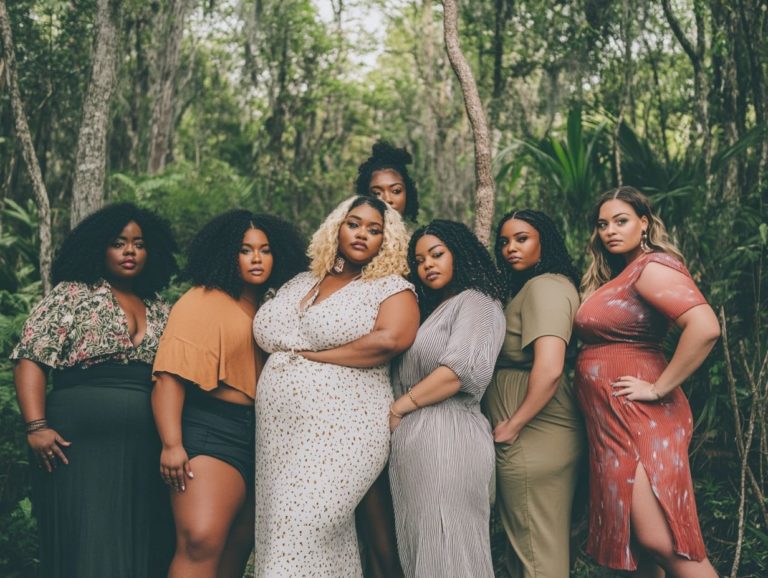10 Fashion Bloggers Promoting Sustainability
Sustainable fashion transcends mere trends; it embodies a movement that dares you to challenge the fast-fashion industry and reevaluate your shopping habits.
This article delves into ten remarkable fashion bloggers who are at the forefront of cultivating a more eco-conscious wardrobe. Through thrifting, upcycling, and championing ethical brands, these influencers provide you with practical tips and innovative ideas for weaving sustainability into your personal style.
Let their passion inspire you to make bold, mindful fashion choices today!
Contents
- Key Takeaways:
- 1. Thrifting and Secondhand Shopping
- 2. Upcycling and DIY Fashion
- 3. Sustainable Fabric Choices
- 4. Supporting Ethical and Fair Trade Brands
- 5. Minimalism and Capsule Wardrobes
- 6. Renting and Borrowing Clothing
- 7. Slow Fashion and Investment Pieces
- 8. Mindful Shopping and Conscious Consumerism
- 9. Recycling and Repurposing Clothing
- 10. Supporting Local and Small Businesses
- Who Are These Fashion Bloggers and What Makes Them Stand Out?
- How Have These Bloggers Influenced the Fashion Industry?
- What Are the Benefits of Following Sustainable Fashion Bloggers?
- How Can One Incorporate Sustainable Fashion into Their Personal Style?
- What Are the Challenges of Promoting Sustainability in the Fashion Industry?
- How Can Fashion Bloggers Encourage Others to Join the Sustainable Fashion Movement?
- Frequently Asked Questions
- 1. Who are the top 10 fashion bloggers promoting sustainability?
- 2. What is sustainability in the fashion industry?
- 3. How do fashion bloggers promote sustainability?
- 4. Why is it important for fashion bloggers to promote sustainability?
- 5. Can sustainable fashion be affordable?
- 6. How can I support the fashion bloggers promoting sustainability?
Key Takeaways:
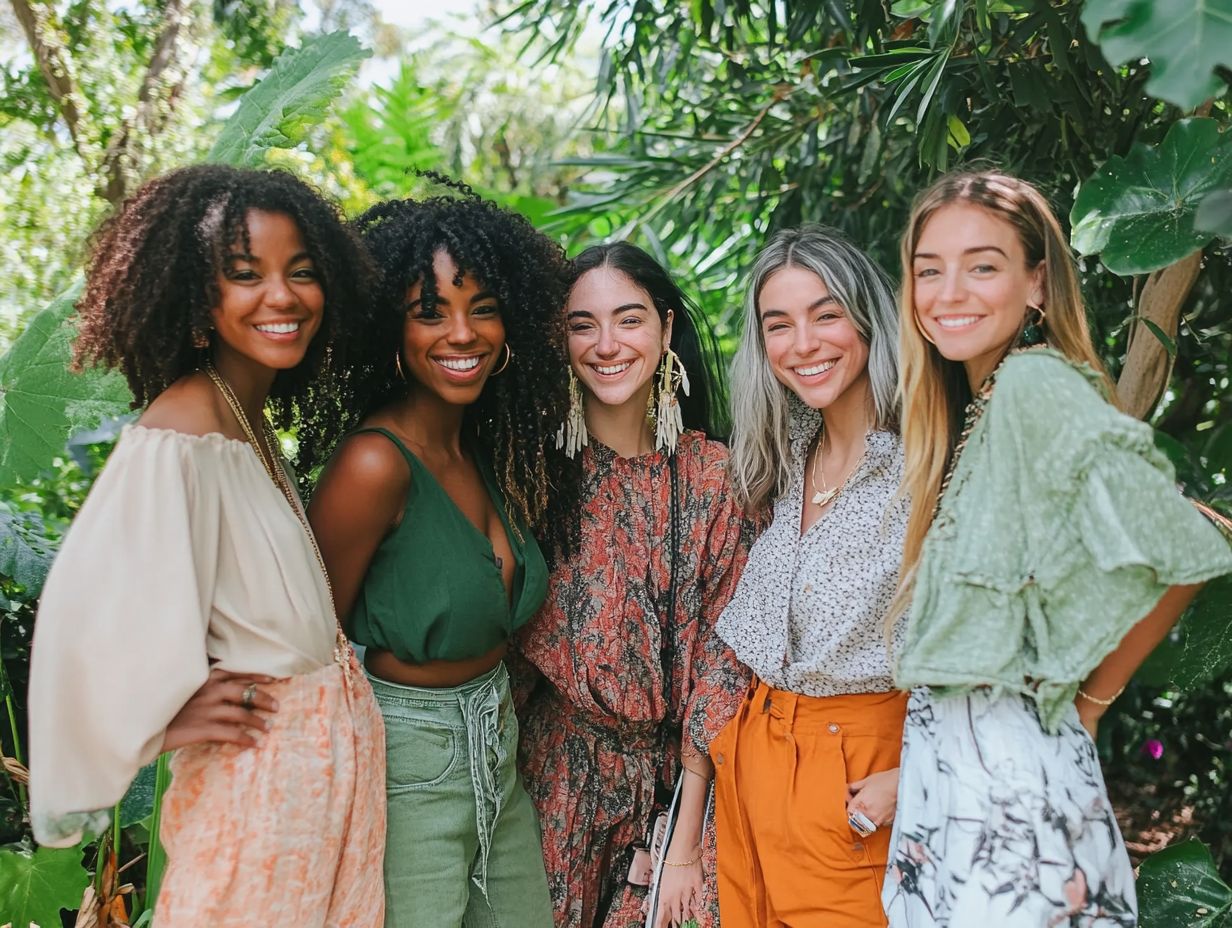
- Thrifting and secondhand shopping are key ways to promote sustainability in the fashion industry, reducing waste and the need for new production.
- Bloggers are promoting upcycling and DIY fashion as creative and sustainable alternatives to fast fashion.
- Supporting ethical and fair trade brands not only benefits the environment, but also supports and empowers marginalized communities in the fashion industry.
1. Thrifting and Secondhand Shopping
Thrifting and secondhand shopping have become essential for sustainable fashion. They allow you to build an eco-friendly wardrobe while challenging the negative impacts of fast fashion.
By prioritizing secondhand items, you not only endorse sustainable alternatives but also contribute to a circular economy, which means reusing clothes instead of throwing them away.
This practice is recognized for its cost-effectiveness, as thrifting invites you to uncover unique pieces at a mere fraction of their original price.
It s worth noting that the fashion industry accounts for 10% of global carbon emissions, with the production of new clothing typically resulting in significant pollution and waste.
By choosing pre-loved items from popular platforms like Poshmark, ThredUp, or your local thrift shops, you can make a meaningful difference in reducing your carbon footprint.
Thrifting not only champions sustainable practices but also sparks creativity, offering one-of-a-kind pieces that carry stories. This enables you to express your personal style while remaining conscious of the planet.
2. Upcycling and DIY Fashion
Upcycling and DIY fashion are not just trendy pursuits; they are transformative practices that allow you to embrace sustainable clothing options while tapping into your creative spirit and minimizing waste through zero-waste principles.
Imagine taking an old pair of jeans and turning it into a chic tote bag or using vibrant fabric scraps to patch up a beloved, worn-out jacket. These creative projects showcase how upcycling can rejuvenate garments and give them a second life.
As you dive into these endeavors, you ll find a community of like-minded individuals eager to share ideas and skills.
Workshops abound, offering invaluable techniques that enrich your DIY journey. Plus, fashion advocacy is on the rise, thanks to influencers like Lucy Siegle and Marjorie Gubelmann, who inspire their followers to embrace conscious consumerism.
By promoting upcycling, they rally for sustainable choices that extend the lifecycle of clothing, transforming fashion into not just a personal expression but also a powerful catalyst for positive environmental change.
3. Sustainable Fabric Choices
Choosing sustainable fabric options is essential for crafting an eco-friendly wardrobe and championing ethical fashion. Your choices significantly influence the fashion industry s environmental impact and the welfare of garment workers.
By selecting materials like organic cotton, which reduces pesticide use and fosters soil health, or Tencel, celebrated for its sustainable production that relies on renewable resources, you can make a meaningful difference.
Embracing recycled fabrics not only curbs waste but also lessens the demand for new materials.
Adopting a slow fashion mindset means investing in high-quality, timeless pieces that prioritize durability and responsible sourcing, encouraging a more thoughtful approach to consumption.
Brands like Reformation, Patagonia, and Eileen Fisher embody this commitment, consistently weaving sustainable practices and materials into their offerings.
Join the sustainable fashion movement today! Check out these bloggers for inspiration.
4. Supporting Ethical and Fair Trade Brands
Supporting ethical and fair trade brands is crucial for nurturing a sustainable fashion industry that champions social justice and guarantees living wages for garment workers. These brands provide you with stylish and conscientious options.
They set themselves apart from the fast fashion giants by emphasizing responsible sourcing, eco-friendly materials, and transparent supply chains. Unlike the fleeting nature of fast fashion, ethical labels prioritize longevity and quality, often featuring timeless designs that transcend trends.
Key players in this movement include companies devoted to fair labor practices and caring for the environment, such as Patagonia and Reformation. To identify genuinely ethical brands, look for certifications like:
- Fair Trade
- Global Organic Textile Standard (GOTS) – This means the brand meets strict environmental and social standards.
- B Corp status – This indicates a company meets rigorous social and environmental standards.
These certifications affirm adherence to rigorous social and environmental standards. By making informed choices and supporting these ethical brands, you have the power to make a real impact!
5. Minimalism and Capsule Wardrobes
Minimalism and capsule wardrobes embody a sustainable lifestyle choice that encourages you to embrace mindful consumption. This allows you to prioritize quality over quantity while making thoughtful fashion decisions.
Adopting a capsule wardrobe can dramatically reduce your environmental impact. This approach promotes the use of fewer, more versatile pieces that can be creatively mixed and matched. Not only will this simplify your daily outfit choices, but it will also foster a deeper appreciation for the garments you choose to keep.
To curate a minimalist wardrobe, focus on selecting items that serve multiple purposes. For example, a classic blazer can effortlessly transition from a polished work look to a relaxed weekend outfit. Investing in timeless, well-crafted pieces ensures longevity, enhancing both your style and sustainability.
6. Renting and Borrowing Clothing

Renting and borrowing clothing present sustainable alternatives to fast fashion. They allow you to enjoy trendy pieces without the long-term commitment and environmental impact that typically accompany traditional shopping.
Platforms like Rent the Runway, Le Tote, and HURR are at the forefront of this movement. They offer a wide range of stylish options for both everyday wear and special occasions. By taking advantage of these services, you can access high-quality garments that might otherwise be financially out of reach, ensuring you look your best for weddings, galas, or even laid-back outings.
This practice reduces waste and makes you part of a growing movement towards sustainability! It encourages a shift in mindset towards responsible consumption. Embracing clothing rentals and borrowing helps you explore your personal style creatively, giving you the freedom to experiment without the guilt of contributing to a throwaway culture.
7. Slow Fashion and Investment Pieces
Embracing slow fashion and investing in high-quality pieces can truly transform the way you perceive and consume fashion. This emphasizes ethical practices that benefit you and the industry as a whole. This philosophy invites you to shift away from fast, disposable trends in favor of thoughtfully crafted garments that prioritize durability and craftsmanship.
By focusing on timeless designs, you can build a wardrobe filled with versatile items think a tailored blazer or a classic pair of jeans that are designed to withstand the test of time. Brands like Everlane and Reformation exemplify these principles, offering well-crafted pieces that not only embody style but also showcase a commitment to sustainable practices.
By making these choices, you play a crucial role in reducing waste and supporting a more conscientious fashion landscape. Join the movement today by choosing ethical brands!
8. Mindful Shopping and Conscious Consumerism
Mindful shopping and conscious consumerism play a crucial role in shaping a sustainable fashion landscape. They encourage you to make informed choices that consider both the environmental impact and the ethical implications of your purchases.
By adopting a reflective approach to shopping, you can evaluate brands based on where materials come from, manufacturing processes, and overall transparency concerning supply chains. This mindful purchasing heightens your personal awareness and deepens your connection to the broader implications of consumption. You ll want to ask important questions about the lifecycle of your clothing, such as the sustainability of materials and the conditions under which labor is sourced.
Keeping a shopping journal can change the game, helping you identify patterns in your spending habits. This practice encourages more intentional choices and helps curb those impulse buys that often lead to regret and waste.
9. Recycling and Repurposing Clothing
Recycling and repurposing clothing are essential components of sustainable fashion that play a vital role in green initiatives. These efforts not only help reduce textile waste but also foster creativity and sustainability within your community, making room for sustainable alternatives in your wardrobe choices.
You might explore various ways to give your old garments a fresh start:
- Donating gently used items to local shelters or thrift shops
- Transforming outdated styles into fashionable pieces through DIY projects
- Participating in clothing swaps with others in your community
Donating not only supports those in need but also bolsters the circular economy. Upcycling has become a popular trend, showcasing your creativity while embracing zero-waste fashion principles. Engaging in notable initiatives like community clothing swaps and pop-up markets fosters a network of like-minded individuals dedicated to sustainability. These efforts strengthen community bonds and educate consumers on the advantages of mindful purchasing, making sustainable fashion accessible and rewarding for everyone.
10. Supporting Local and Small Businesses
Supporting local and small businesses is pivotal in promoting sustainable fashion practices. These enterprises often prioritize ethical operations and positively impact their communities.
By investing in local retailers, you not only discover unique products like handmade items and locally sourced fabrics but also help reduce the carbon footprint linked to long-distance shipping. Many small businesses are now embracing eco-friendly materials and production methods, demonstrating a genuine commitment to the planet s well-being.
Engaging in notable initiatives like community clothing swaps and pop-up markets fosters a network of like-minded individuals dedicated to sustainability. These efforts strengthen community bonds and educate consumers on the advantages of mindful purchasing, making sustainable fashion accessible and rewarding for everyone.
Who Are These Fashion Bloggers and What Makes Them Stand Out?
Fashion bloggers are your go-to influencers in the sustainable fashion movement. They utilize their platforms to champion eco-conscious choices while emphasizing the crucial need for inclusivity, diversity, and representation of Black, Indigenous, and People of Color (BIPOC) communities within the fashion industry.
You’ll often see them artfully blending their personal styles with a commitment to sustainability, showcasing a delightful mix of vintage treasures, upcycled garments, and ethically made pieces for their followers to admire. By sharing authentic stories behind their fashion choices, these bloggers inspire you to rethink your own consumption habits, sparking a meaningful dialogue about the true impact of fast fashion and highlighting the 5 best practices for sustainable fashion designers.
Take renowned bloggers like Kristen Leo and Claire Press, for example; they masterfully weave their distinct aesthetics with powerful messages about fashion ethics, turning their social media presence into influential advocacy platforms. Their posts frequently highlight sustainable brands, DIY projects, and candid discussions about the urgent need for change in the fashion landscape. For anyone interested in this movement, following sustainable fashion influencers is a great way to engage audiences near and far while cultivating a community centered on mindful consumption.
How Have These Bloggers Influenced the Fashion Industry?
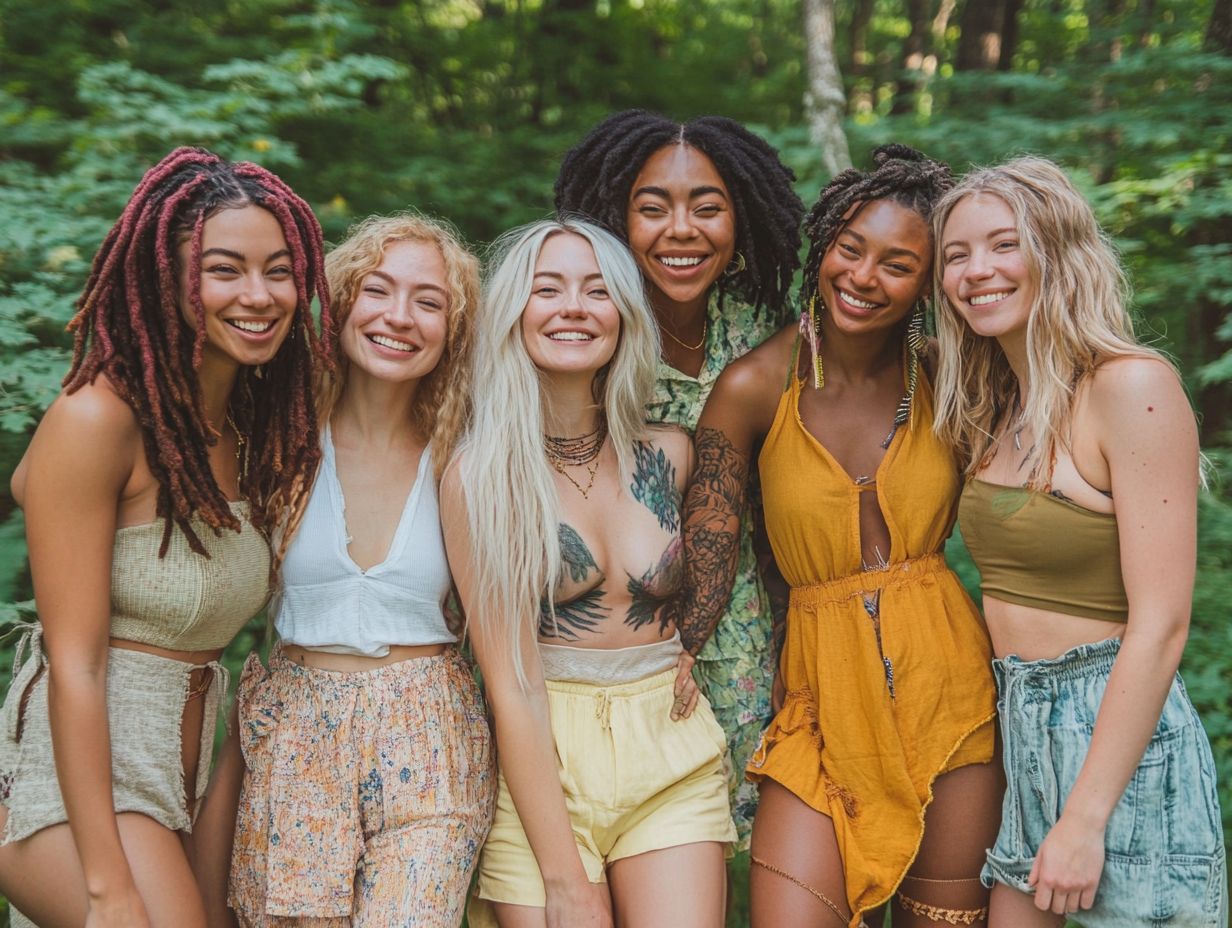
Fashion bloggers have undeniably transformed the fashion landscape. They wield their influence to set trends, educate on sustainable practices, and challenge the fast fashion narrative with their distinctive styles and viewpoints.
These digital influencers spotlight eco-friendly brands, advocating for a mindset that values quality over quantity in wardrobe selections. For example, a prominent fashion blogger recently partnered with a sustainable brand to introduce a capsule collection. This collaboration elegantly illustrates how conscious consumption can marry style with ethics, especially as they showcase 10 trends in sustainable fashion you can’t miss.
By sharing their personal journeys and behind-the-scenes glimpses, bloggers foster a genuine connection with their audience. They ignite conversations about environmentally responsible practices. This approach cultivates a community that prioritizes sustainability, ultimately guiding you towards more stylish ways to wear sustainable fabrics and responsible fashion decisions.
What Are the Benefits of Following Sustainable Fashion Bloggers?
Following sustainable fashion bloggers opens up a world of benefits for you. This includes access to invaluable fashion recommendations, unique style inspiration, and essential consumer education on environmentally friendly choices, aiding in your journey towards a sustainable lifestyle.
These influencers curate content that showcases the latest trends in sustainable fashion while underscoring the significance of mindful consumption. Their platforms create a vibrant community where you can connect with like-minded individuals, share insights, and discover 10 sustainable fashion brands you should know to support each other’s journeys toward a more environmentally responsible lifestyle.
By engaging with their followers through thoughtful discussions, Q&A sessions, and interactive tutorials, these bloggers create an atmosphere rich in learning and inspiration. This allows you to uncover practical tips on making more conscious purchases and understanding the impact of your choices on the planet, including 5 ways fashion brands can go green, giving you the power to make informed decisions about your wardrobe.
How Can One Incorporate Sustainable Fashion into Their Personal Style?
Incorporating sustainable fashion into your personal style means making intentional choices that prioritize eco-friendly options and consider the environmental impact. This allows you to express your individuality while contributing to a more sustainable future.
You’ll love curating a versatile collection by selecting timeless wardrobe essentials that mix and match effortlessly. This approach stands the test of time, effortlessly surpassing fleeting trends and embodying the principles of slow fashion.
Exploring secondhand options, like thrift stores and online reselling platforms, unveils unique treasures. It also extends the life cycle of garments, helping to reduce waste and supporting the idea of thrift store finds.
When you support ethical brands that emphasize fair labor practices and sustainable materials, your fashion choices align with a commitment to social responsibility.
Why not gather your friends for a fun clothing swap? This not only refreshes your wardrobe sustainably but also fosters a delightful sense of camaraderie and supports community initiatives focused on sustainable living.
What Are the Challenges of Promoting Sustainability in the Fashion Industry?
Promoting sustainability within the fashion industry presents many challenges, including rampant consumerism, the dominance of fast fashion, and the need for widespread ethical practices, especially in the context of colonialism and its lingering effects.
On top of these challenges, brands often find themselves under economic pressures that favor immediate profits over long-term sustainability aspirations. The intricacies of supply chains can further obscure the origins of materials, complicating efforts to ensure ethical sourcing.
A notable gap exists in consumer education regarding sustainable practices, which can impede informed purchasing decisions and leave many unaware of the consequences of their choices.
Yet, despite these formidable obstacles, several brands have made impressive progress. Initiatives that leverage technology for transparency, educational campaigns aimed at raising awareness about sustainable materials, and collaborations that promote circular economy principles are paving the way for frameworks that advocate for ethical practices and actively engage consumers in the journey toward sustainability.
How Can Fashion Bloggers Encourage Others to Join the Sustainable Fashion Movement?
Fashion bloggers can be key players in the sustainable fashion movement. They use their platforms to champion fashion advocacy and eco-conscious choices through influencer marketing, highlighting the importance of fashion awareness.
By weaving captivating personal stories into their content, they connect emotionally with their audience, emphasizing the significance of ethical practices. They share insights into sustainable brands and offer tips for mindful consumption, educating and inspiring a shift in their followers’ buying habits, highlighting the role of social media in promoting sustainable fashion.
Community initiatives, such as clothing swaps or eco-friendly challenges, create deeper engagement and foster a sense of belonging among their audience. The power of social media amplifies these messages, generating a ripple effect of awareness that transforms sustainable fashion from a mere trend into a meaningful movement that resonates with many.
Frequently Asked Questions
1. Who are the top 10 fashion bloggers promoting sustainability?
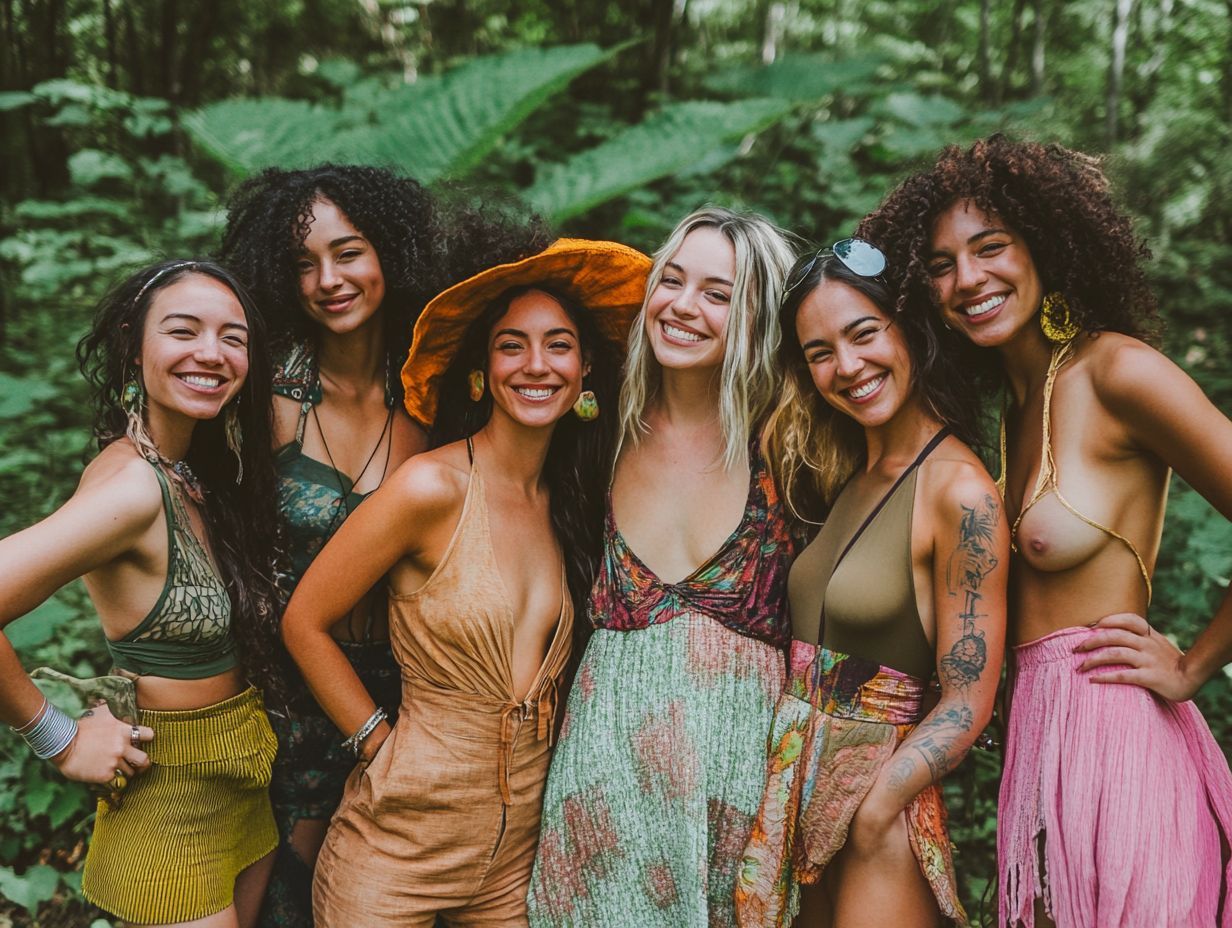
The top 10 fashion bloggers promoting sustainability are Emma Watson, Aja Barber, Renee Peters, Sara Koonar, Sustainably Chic, Eco Warrior Princess, Jenny Mustard, Lisette Kreischer, Verena Erin, and Besma Whayeb.
2. What is sustainability in the fashion industry?
Sustainability in fashion means making clothing that is good for the planet, society, and the economy. This includes using sustainable materials, reducing waste and emissions, and promoting fair labor practices.
3. How do fashion bloggers promote sustainability?
Fashion bloggers promote sustainability by using their platforms to educate and inspire their audiences to make more ethical and environmentally conscious fashion choices. They also collaborate with sustainable fashion brands and share tips on incorporating sustainable fashion into everyday style.
4. Why is it important for fashion bloggers to promote sustainability?
Fashion bloggers have a large influence on their followers and can raise awareness about the negative impact of fast fashion on the environment and workers in the fashion industry. By promoting sustainability, they encourage their audience to make more conscious and responsible fashion choices.
5. Can sustainable fashion be affordable?
Yes, sustainable fashion can be affordable. While some sustainable fashion brands may have higher price points, there are many affordable options available. Investing in high-quality, ethically made pieces saves money over time as they are designed to last longer than fast fashion items.
Join the sustainable fashion movement today!
6. How can I support the fashion bloggers promoting sustainability?
Support fashion bloggers by following them on social media and reading their blog posts. Share their content to spread the word about sustainable fashion.
Engage with their partnerships by shopping from eco-friendly brands. Your purchases show that you care about both the bloggers and the future of fashion!
